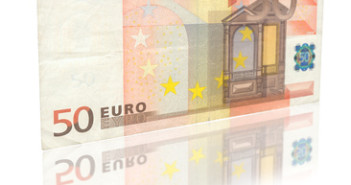EUR/USD lost over 100 points on Wednesday, following the release of the Federal Reserve’s recent policy meeting. The minutes indicated that the Fed could introduce QE tapering in the next few months. The pair has settled down on Thursday and is trading in the mid-1.34 range. In economic news, US retail sales numbers were positive, but housing data disappointed. Eurozone PMIs were mixed, as German numbers were strong, but French and Eurozone figures missed their estimates. It’s another busy day in the US, with three key events – PPI, Unemployment Claims and Philly Fed Manufacturing Index.
Here is a quick update on the technical situation, indicators, and market sentiment that moves euro/dollar.
EUR/USD Technical
- In the Asian session, EUR/USD edged lower, consolidating at 1.3409. The pair has moved slightly higher in the European session.
- Current range: 1.3400 to 1.3440.
Further levels in both directions: Â Â 
- Below: 1.34, 1.3320, 1.3240, 1.3175, 1.31, 1.3050, 1.3000, 1.2940, 1.2890 and 1.2840.
- Above: 1.3440, 1.35, 1.3570, 1.3650, 1.3710, 1.3800 and 1.3870
- 1.3400 is providing weak support. 1.3320 is stronger.
- 1.3440 is the next line of resistance. This is followed by the round number of 1.3500.
EUR/USD Fundamentals
- 8:00 French Flash Manufacturing PMI. Exp. 49.6, Actual 47.8 points.
- 8:00 French Flash Services PMI. Exp. 51.3, Actual 48.8 points.
- 8:30 German Flash Manufacturing PMI. Exp. 52.3, Actual 52.5 points.
- 8:30 German Flash Services PMI. Exp. 53.1, Actual 54.5 points.
- 9:00 Eurozone Flash Manufacturing PMI. Exp. 51.6, Actual 51.5 points.
- 9:00 Eurozone Flash Services PMI. Exp. 51.9, Actual 50.9 points.
- 13:30 US PPI. Exp. -0.2%.
- 13:30 US Unemployment Claims. Exp. 333K.
- 13:30 US Retail Sales. Exp. 0.1%.
- 13:30 US Core CPI. Exp. 0.1%.
- 14:00 US Flash Manufacturing PMI. Exp. 52.6 points.
- 14:45 FOMC Member Jerome Powell Speaks.
- 15:00 Eurozone Consumer Confidence. Exp. -14 points.
- 15:00 USÂ Philly Fed Manufacturing Index. Exp. 15.8M.
- 15:30 US Natural Gas Storage. Exp. -34B.
- 16:00 German Buba President Jens Weidmann Speaks.
- 18:00 FOMC Member James Bullard Speaks.
*All times are GMT
For more events and lines, see the Euro to dollar forecast.
EUR/USD Sentiment
- Dollar Jumps after Fed minutes: The Federal Reserve released the minutes of its most recent policy meeting on Wednesday. Policymakers said the current QE level of $85 billion monthly purchases of bonds could taper “in coming months†if the economy continued to improve. The dollar was up sharply after the minutes were released. Earlier in the week, Fed chair Bernard Bernanke said that the employment market improvement was “meaningful†and that interest rates would likely remain low even after QE ends.
- European PMIs provide mixed results: European Manufacturing and Services PMIs pointed to a mixed picture in the Eurozone. In France, both PMIs came in below 50, pointing to contraction. Eurozone Manufacturing PMI was within expectations, while Services PMI stayed above 50 but fell short of the estimate. The news was better out of Germany, as both PMIs beat the estimates and remained comfortably above the 50-point level. The euro will have trouble holding its own against the US dollar if the region doesn’t produce stronger numbers.
- German PPI falters: Eurozone inflation indicators continue to post numbers far below the ECB’s inflation target of 2.0%. German Producer Price Index dipped 0.2%, its third decline in the past four releases. The estimate stood at 0.1%. The low inflation numbers underscore weak economic activity in the Eurozone, and this could make things difficult for the euro.
- Negative rates for ECB?: With inflation remaining very weak despite recent rate cuts, the ECB is considering cutting the deposit rate, which currently stands at 0.0%. However, a move into negative territory would represent unchartered territory and could have negative consequences for the economy. So if the ECB does go ahead and reduce to deposit rate, we could see a “mini cut†of less than 0.25%. The OECD is also expressing concern about the dangers of deflation in the Eurozone and is urging the ECB to consider implementing quantitative easing. QE represents an important tool in the arsenals of central banks such as the Federal Reserve and the Bank of England.



